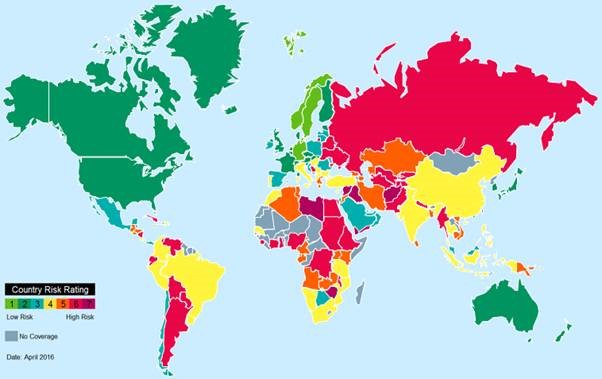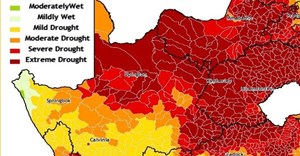
El Niño a threat to continuity of African supply chains
Sub-Saharan Africa has been swept up in a wave of natural disasters and extreme weather systems which have hit supply chains this quarter. South Africa and Ethiopia, in particular, are struggling to cope with the prolonged drought caused by the El Niño weather system. These adverse weather systems are having inevitable implications on the agricultural industry’s output within Sub-Saharan Africa.

Global supply chain risk Q1 2016
South Africa in particular has seen output of white corn fall by 31% this year due to the effects of El Niño. In order to cope with this disruption to production, the country will have to import 3.8m tonnes of maize which will inadvertently place increased strain on the country’s foreign exchange reserves.
In addition, the risk of floods and landslides brought by El Niño damaging the infrastructure in certain parts of the region further threatens supply chain and business continuity in the region.
The impact from adverse weather conditions are compounded by economic headwinds facing the region. Sub-Saharan Africa’s largest economies are dependent on commodity exports to China. With commodity prices remaining persistently low and China’s growth slowing, these continue to put stress on businesses and supply chains in the region.

The global picture
Globally, supply chain risk rose for the second consecutive quarter, from 79.3 in Q4 2015 to 79.8 in Q1 2016, the joint highest recorded level of supply chain risk in a first quarter since records began in 1995. Natural disasters are contributing to heightened supply chain risk in other parts of the world too, however, the extent of disruption to supply chain activity is determined by a country’s capacity to cope with such damage. Despite a 6.4-magnitude earthquake in Taiwan and a 5.8 magnitude quake in Japan, manufacturers in both countries were able to swiftly resume production, using stock reserves to plug any gaps.
According to Andre Coetzee, managing director of the Chartered Institute of Procurement & Supply (CIPS) Africa “The latest Risk Index shows that regardless of international political relations, supply chain activity will always be exposed to the threat of natural disasters and extreme weather. The effect of drought on South Africa and the Sub-Saharan African region has quantified this in recent months.”
“A fundamental step in sustaining a resilient supply chain is identifying areas of risk, and establishing precautions which work to minimise the disruption caused. The experience of businesses in Japan and Taiwan reflect how the magnitude of disruption was overcome effectively”.
Oana Aristide, Interim Lead Economist, Country Risk services, Dun & Bradstreet, said “Soft commodity prices and the lack of global growth engines combined to increase supply chain risks in the first quarter.”
















